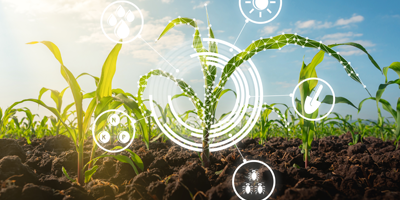 According to the WTO, 345 million people in 82 countries suffer from food security issues as of June 2022. There’s no one cause for this—war, drought, and other external factors play a huge role. One way to ameliorate this problem is by ensuring that, where crops are being grown successfully, nothing is going to waste. Machine vision plays a part in ensuring that everything farmers grow makes it to someone’s dinner table. In this blog post, we will talk about some of the exciting developments in the field of machine vision that are helping to keep our food chains stable.
According to the WTO, 345 million people in 82 countries suffer from food security issues as of June 2022. There’s no one cause for this—war, drought, and other external factors play a huge role. One way to ameliorate this problem is by ensuring that, where crops are being grown successfully, nothing is going to waste. Machine vision plays a part in ensuring that everything farmers grow makes it to someone’s dinner table. In this blog post, we will talk about some of the exciting developments in the field of machine vision that are helping to keep our food chains stable.
Before we begin, let’s review what machine vision entails. Machine vision describes the imaging technology developed for machines in order to better help them automate tasks. The “vision” in machine vision can mean the sort of stereoscopic color vision that the human eye sees, but it can also refer to images made from parts of the spectrum invisible to the human eye. The machine’s understanding of the images that machine vision produces is enabled by recent increases in computing power and developments in the field of machine learning. Through these technological breakthroughs, machine vision capabilities are making a huge impact on the agricultural industries.
Now, we’re going to turn to three examples of what machine vision has to offer the agricultural supply chain. First, machine vision could be used to develop crop growth estimation systems. Using machine vision to create real-time estimates of how and when crops will come to fruition can enable farmers to better allocate resources, especially has growing systems grow longer or shorter in unexpected ways due to climate change. Second, machine vision is used in automating simple, but laborious, tasks such as seedling transplanting. Automatic transplanters could increase the efficiency of the process and make large-scale farming of the scale necessary to meet population growth a reality. Third, but certainly not final, machine vision can help to accurately grade the quality of fruit by using a machine learning algorithm to capture an image of the fruit in order to compare it to a library of comparable images to assign a probably quality to it.
In addition to the examples above, machine vision has been utilized in applications as varied as plant and fruit detection, harvesting support, disease detection, insect detection, and vision-based systems for autonomous agricultural robots and vehicles. From all these examples, it is undeniable that machine vision is central to the future of agriculture. With systems in place that can reduce waste, increase the efficiency of successful harvests, and help get food to where it needs to be, our agricultural future is looking much brighter than it would without tools such as these.
For more on this topic, check out this page to begin learning about the machine vision-capable cameras that Phase 1 Technology has to offer.
